How To Freeze Sourdough Pizza Dough - The Ultimate Guide
This post may contain affiliate links.
There’s nothing quite like homemade sourdough pizza. That crisp, chewy crust with all the flavor that only sourdough can bring. But let’s be real … sometimes life gets in the way of pizza night.
Mixing, fermenting, and shaping dough doesn’t always fit into a busy schedule. The good news? You can freeze sourdough pizza dough so you always have a ball of dough ready to go whenever the pizza craving hits. With just a little bit of prep, you can stock your freezer with homemade dough. Still enjoy all the flavor of fresh sourdough pizza, without the last-minute stress. Family pizza nights just got easier!

My sourdough discard pizza dough recipe is one of the most popular recipes on The Pantry Mama website (mostly because you can use active sourdough starter or sourdough discard). One of the questions I get asked the most is "how do I freeze sourdough pizza"? And while I've got a few notes with the recipe, I thought I'd put together this guide to give you all the different ways you can freeze sourdough pizza dough (and thaw it successfully).
In this post, I’ll walk you through:
- how to freeze sourdough pizza dough
- best way to thaw sourdough pizza dough
- troubleshooting tips to make sure your frozen dough bakes up just as delicious as fresh!
Can You Freeze Sourdough Pizza Dough?
Yes you can! You can freeze it so that you end up with a crisp crust on the outside, soft and chewy on the inside, even after it's been frozen! But as much as we all love pizza night, making sourdough pizza dough from scratch isn’t always realistic when life gets busy. Between long fermentations, shaping, and resting times, it can feel like a project you need to plan days in advance.
That’s where freezing comes in. Freezing sourdough pizza dough is a simple way to save yourself time without missing out on homemade flavor. No need to call for takeout or settle for store-bought bases, you’ll have real sourdough pizza dough waiting in your freezer. I cannot tell you how many times frozen sourdough pizza bases have saved me from serving cereal for dinner. When I flew to NY earlier this year, you can be sure I stocked the freezer with frozen sourdough pizza bases. This meant my family had plenty of easy dinner options while I was away.
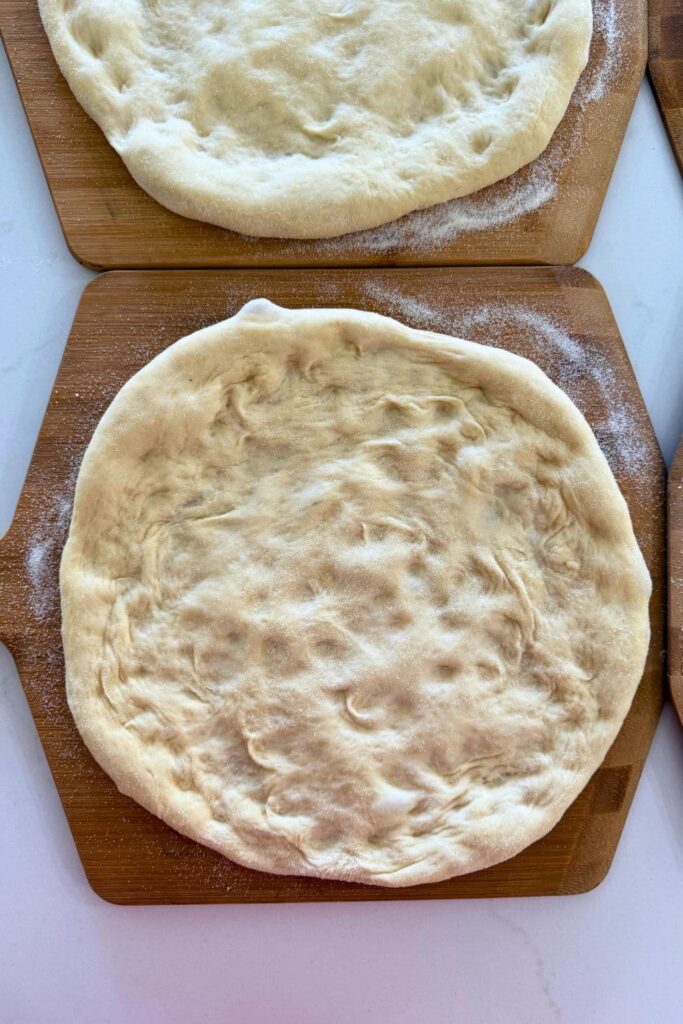
When Should You Freeze Sourdough Pizza Dough?
For the most successful freeze and thaw process for your sourdough pizza dough, timing really is everything (and really, timing is key for sourdough too, right?). Timing matters when you freeze sourdough pizza dough because it ensures you preserve the rise and flavor of the dough. I always remember the day my husband called to tell me that the sourdough pizza bases I froze for him never rose when he baked them. I thought hmmmm yes I remember when I froze those, I thought they were a bit over proofed. Turns out they had been left on the counter a lot longer than I thought they had!
The best stage of fermentation to freeze sourdough pizza dough is:
- For dough balls - after bulk fermentation but before shaping.
- For pizza bases - after shaping into bases, allow them to rest for around 30 minutes and then snap freeze.
How to Freeze Sourdough Pizza Dough
I've been making sourdough pizza crusts for so long that I've actually created multiple ways to freeze the dough, depending on how you're going to thaw and bake it, or how busy you are. I've even created a method to par-bake and freeze your bases (it's an absolute game changer).
Freezing Uncooked Sourdough Pizza Bases
Whenever I make my sourdough pizza dough recipe, I'll often have a few spare bases (mostly because I make a triple batch of this dough). It's really easy to pop these bases in the freezer so you've got frozen sourdough pizza bases ready to add your favorite toppings.
Place each pizza base onto a piece of parchment paper and then onto a pizza peel. Snap freeze the base by allow the base to freeze uncovered in the freezer for around an hour. Once all the bases are frozen, stack them (ensuring you leave the parchment paper between them) and then wrap the stack in aluminium foil or place into a large zip loc bag.
When you want to use one, take out a base and top it with whatever you like - you don't even have to let it defrost, it will defrost as you add the topping! How easy is that?

Freezing Pizza Dough Balls
Sometimes, you just want to have some frozen sourdough pizza dough on hand, without having to go through the whole mixing and fermentation process. I will often make a double batch of pizza dough (or even triple now that I have my Ankarsrum Assisent) and then follow this process once the dough has finished bulk fermentation:
- Portion the dough into pizza-sized balls (I generally use 250g).
- Lightly coat with olive oil to prevent sticking.
- Place each dough ball in a ziplock bag or airtight container.
- Label with date (and hydration/recipe if you keep track).
- Freeze flat if possible to save space.

My Par-Bake Freezing Method for Sourdough Pizza Bases
I recently developed this method for freezing par-baked sourdough pizza bases. Having lots of hungry boys in my house means that being able to produce a delicious sourdough pizza from frozen ... fast ... becomes a real advantage. With this method I can make wood-fired pizzas with literally no effort at all. So here's how I do it!
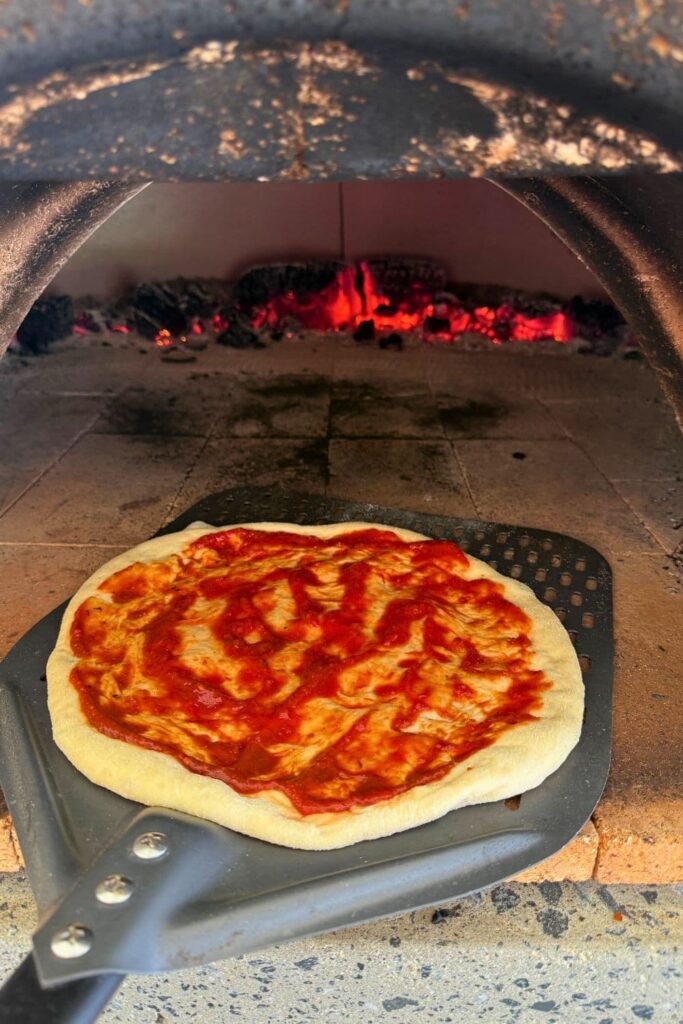
Shape your sourdough discard pizza bases and allow them to proof for around 30 minutes on the board.
Spread with a thin layer of homemade pizza sauce (you really want to go easy on the sauce). You could also add this white pizza sauce.
Par bake the pizza crust so that the base is baked underneath, but still not fully baked on top. I generally do this in a wood fired pizza oven or on a pizza stone in my oven (the pizza stone bakes the bottom of the dough faster).
Remove from the oven and place onto a wooden pizza peel to cool for a few minutes.

Layer the par-baked sourdough pizza bases between pieces of parchment paper and place into the freezer to snap freeze.
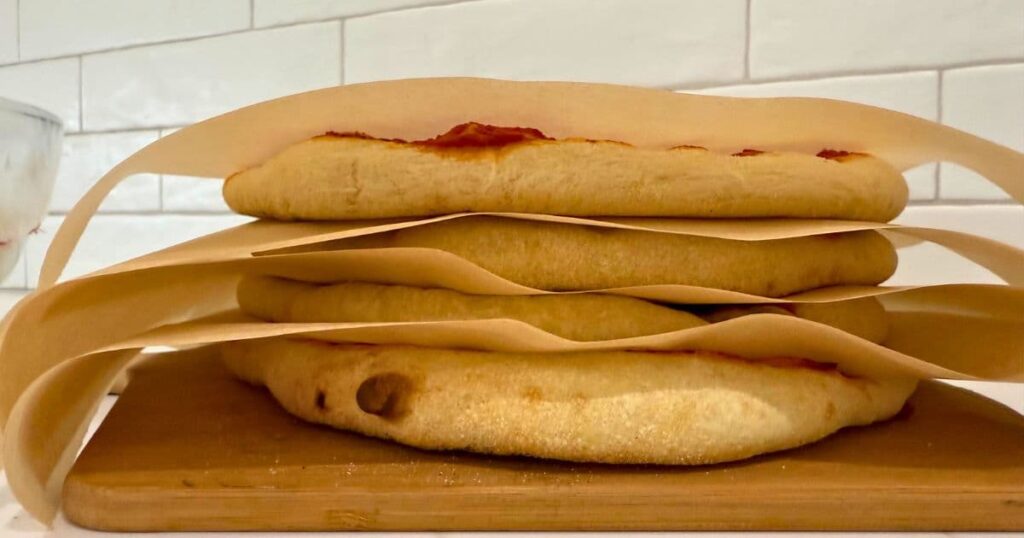
Once frozen to the touch, place into a large ziploc bag or wrap in aluminum foil and place back into the freezer until you need it.
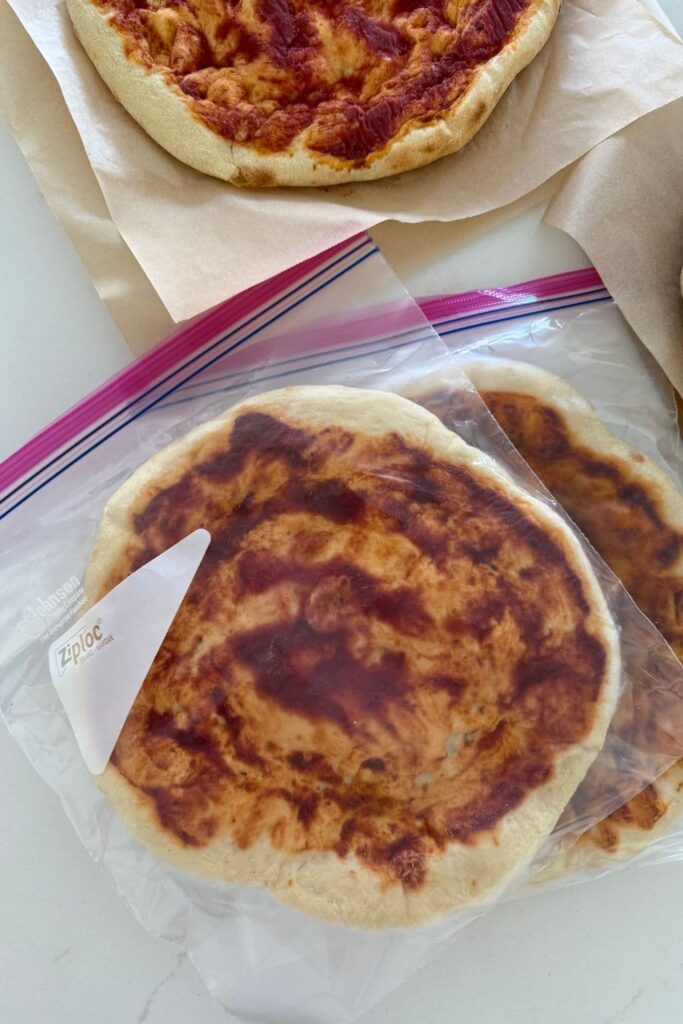
When you want to use the par-baked sourdough pizza base, simply take out of the freezer and add your favorite pizza toppings. Bake in a hot oven until the cheese is golden. You don't even have to thaw these, they can be topped and baked from frozen.
How to Thaw Sourdough Pizza Dough
When using frozen sourdough pizza dough, I only recommend thawing it when it has been portioned into dough balls. If you've frozen par-baked sourdough pizza bases or uncooked sourdough pizza bases, there's no need to thaw before you use them. They can be baked right from frozen.
When thawing sourdough pizza dough balls, you can either:
- Overnight thaw in the fridge - this is the best method in my opinion. Just place the frozen dough into the fridge and allow it to slowly defrost overnight.
- Room temperature thaw for quicker use - just leave the ziploc bags of dough on the counter until thawed. The time it takes depends on the temperature in your home, but usually 3 to 4 hours.
Kate's Tips for Success
- Always freeze fresh sourdough pizza dough, not over-proofed dough.
- Avoid freezer burn by using aluminum foil and plastic wrap or ziploc bags.
- Don’t refreeze thawed dough. Once it's thawed you need to use it or toss it.
- Give dough time to “wake up” before shaping and baking. Room temperature dough is so much easier to work with!
How Long Can You Freeze Sourdough Pizza Dough?
As a general rule you can freeze uncooked pizza dough for up to 3 months. Past that, the pizza dough may lose it's elasticity and rise power. And I can honestly say this has been the case when I have tested the theory.
Par-baked sourdough pizza crusts can be frozen for up to 6 months, as long as you wrap them tightly to avoid freezer burn. Because the dough has already been baked, you don't need to worry about the wild yeast losing their rising power.
Troubleshooting Frozen Pizza Dough
Even when you do everything right, frozen sourdough pizza dough can sometimes behave a little differently than fresh dough. Don’t worry – most problems are easy to fix with a few simple adjustments.
- The dough feels too wet or sticky – Freezing and thawing can change the surface texture of your dough. If it feels overly sticky, dust it lightly with semolina flour before shaping. A drizzle of olive oil on your hands can also help prevent sticking without toughening the pizza dough.
- The dough isn’t rising much after thawing – Sourdough yeast can be a little sleepy after a trip to the freezer. Give your dough extra time at room temperature to “wake up.” If you usually let it rest for 1 hour before shaping, try giving it 2–3 hours instead. Look for small bubbles and softness rather than relying on the clock.
- The dough tears when you try to stretch it – This usually means the gluten is tight. Let the dough relax for 10–15 minutes, covered, before trying again. A short rest often gives the gluten time to relax so you can stretch it thin without tearing.
- The dough tastes a little flat – Sometimes freezing can mute the sourdough flavor slightly. If this happens, try topping your pizza with bold flavors (like roasted garlic, caramelized onions, or a drizzle of olive oil) to bring it back to life. Get inspired by this list of sourdough pizza toppings!
With a little patience and practice, frozen sourdough pizza dough can bake up just as beautifully as fresh dough – no one will ever know you pulled it from the freezer.
Creative Ways to Use Frozen Sourdough Pizza Dough
If you've got balls of sourdough pizza dough in your freezer that need to be used up, you could turn them into sourdough pizza rolls, fried sourdough pizza dough or even this delicious sourdough strawberry crumble pizza! So good!

Frequently Asked Questions
Absolutely! As long as you have frozen the pizza dough or bases before they've used up all of the energy in the yeast, they will still rise, even after being frozen. If you've over proofed the dough before freezing, then no, it won't rise after being frozen.
I prefer to use high protein bread flour to create my sourdough pizza recipe. If you don't have a high protein bread flour, adding some vital wheat gluten to some all purpose flour is a good alternative. You might also be inspired by this sourdough whole wheat flour pizza dough recipe.
No, you just need to make your sourdough pizza dough as the recipe states, no changes to the mixing required.



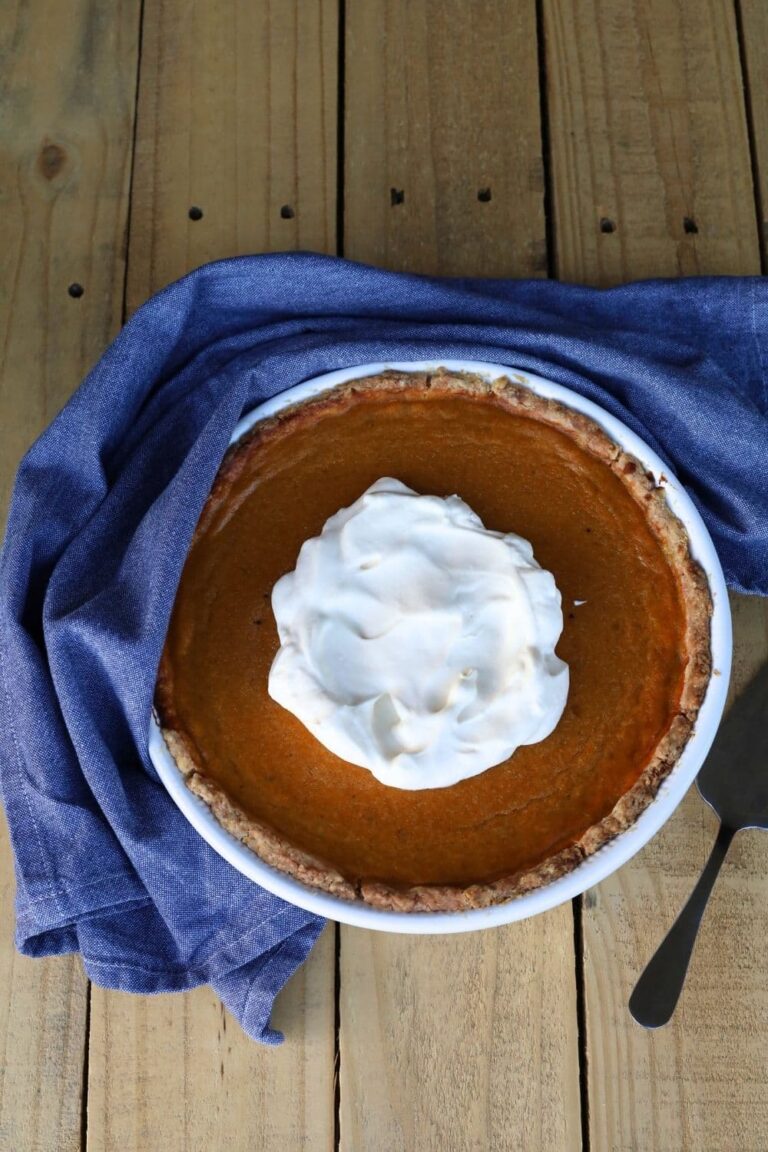



Do you have a printable for this information?
You can print the page out, but I'll work on getting this in a printable for you 🙂
I love all of your recipes, I learn so much from.ypu and suggest many to sign up.
Thank you so much
Oh wow, thank you so much. This is going to help me a lot. I really enjoy all you offer.
I did make your recipe for the dog treats and I will never buy treats again, my fur babies love them and it is helping one of them that has Food allergies
Thanks again,
Barb
What do you use to freeze your rolled out pizza doughs?
So I freeze the rolled out bases stacked up on a pizza peel separated by parchment paper. Once they're frozen (and the pizza peel has ensured they are all flat) I place them in a large ziplock bag (if they're small enough) or I wrap the stack in aluminium foil and return to the freezer without the pizza peel. Hope that helps xo